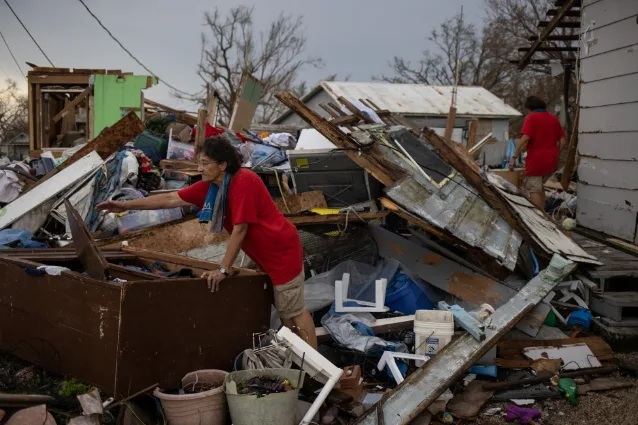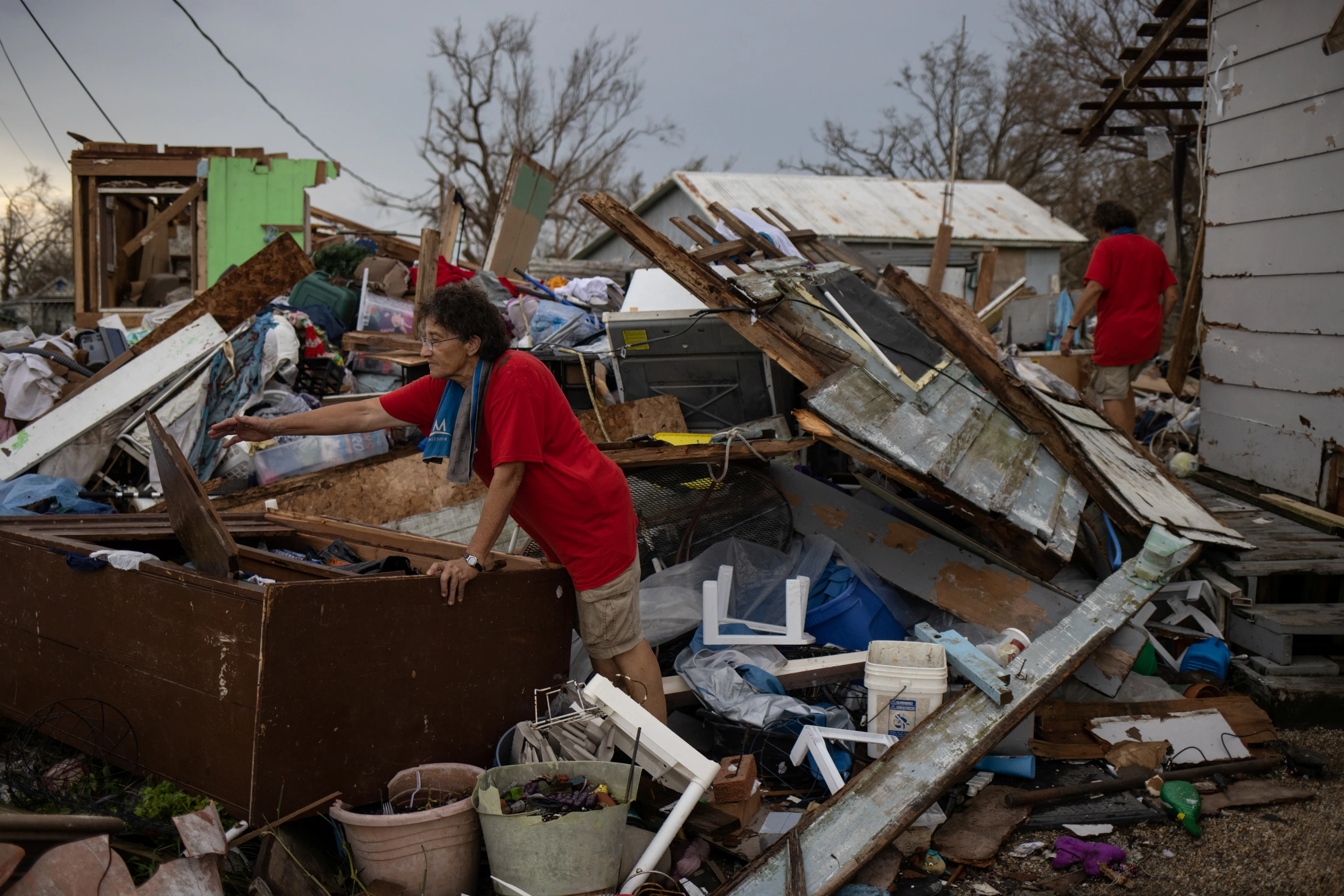
Louisiana towns still crawling out from Ida's destruction
By Devika Krishna Kumar
NEW ORLEANS (Reuters) - Shattered communities across southern Louisiana were still assessing storm damage from Ida on Thursday as floodwaters had yet to recede in many places four days after the hurricane knocked out power to a million homes and businesses.
The Category 4 hurricane came ashore on the barrier islands and swampy lowlands known as the bayou, where many small towns are difficult to reach even without roads being clogged with fallen trees, power lines and debris that were hurled about by gusts of wind that reached 172 miles per hour (276 kph).

Twin sisters Bridget and Rosalie Serigny, 66, search for personal items stored in their shed which was left destroyed in the aftermath of Hurricane Ida in Golden Meadow, Louisiana, U.S., September 1, 2021. REUTERS/Adrees Latif
The crucial offshore oil hub of Port Fourchon was directly in the path of the storm and cut off from supply boats, fuel and air ferry services, crippling operations in the U.S. Gulf of Mexico, which supplies about 16% of U.S. oil production.
Around 600,000 people had no water and another 400,000 were advised to boil their tap water before drinking it, Louisiana Governor John Bel Edwards said. At least six deaths have been reported.
MUST SEE: New York, New Jersey declare flash flood emergencies, at least 9 reported dead
Ida leveled Grand Isle, a town of 740 on the edge of the Gulf of Mexico, where officials said virtually every structure sustained damage and about 40% were destroyed. About three feet (one meter) of sand covered the island, rendering it uninhabitable.
"We are a broken community right now. We don't have electricity. We don't have communication. We don't have gas or water and sewer systems are very fragile," Jefferson Parish President Cynthia Lee Sheng told a news conference after flying over Grand Isle and the rest of Ida's path on Wednesday.
Wrecked neighborhoods looked like "a little pile of matchsticks," Lee Sheng said.

FILE PHOTO: A couple collect belongings from their damaged property in the aftermath of Hurricane Ida in Golden Meadow, Louisiana, U.S., September 1, 2021. Picture taken with a drone. REUTERS/Adrees Latif
U.S. Representative Steve Scalise, whose district took the brunt of the storm and joined Lee Sheng on the flight, reported seeing major marine vessels and dry docks picked up and moved.
President Joe Biden is scheduled to survey the destruction for himself on Friday, when Edwards said he would present Biden with a long lists of needs.
"We need all the help we can get," Edwards said.
Long lines formed outside the few places selling gasoline or distributing emergency supplies.
Although most of Louisiana's hospitals escaped catastrophic damage, many were running on generators, and some in the hardest hit areas evacuated their patients to safer ground.
RELATED: Warnings issued as Ida's remnants push into Atlantic Canada
In Houma, the Terrebonne General Health System building was abandoned after Ida tore its roof off and flooded the interior, but ambulances used its parking lot as a staging area for responding to emergency calls across Terrebonne Parish.
"We have been running constantly. All units have been all-hands-on-deck since Monday," said Donna Newchurch, who heads the Louisiana Ambulance Alliance.
Ida struck a state where hospitals were already crowded with COVID-19 patients and short of nurses.
Edwards said 2,447 COVID patients were hospitalized on Wednesday, including 446 on ventilators. The state recorded 12,380 new infections over the previous four days, though Edwards said the real figure was likely much higher because so many testing centers were closed.
(Reporting by Devika Krishna Kumar in New Orleans; Writing by Daniel Trotta; editing by Richard Pullin)